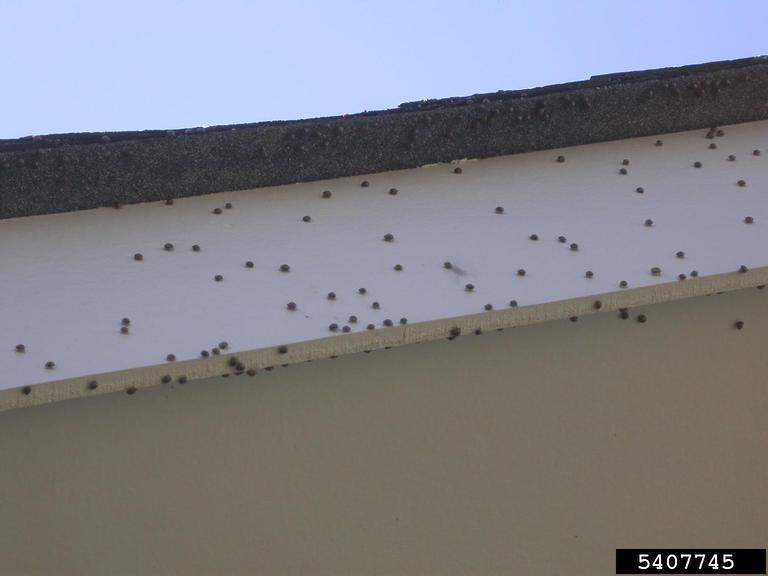We study the insects and mites that eat what you want to eat & the pollinators that make your food possible.
Search NC Small Fruit, Specialty Crop, and Tobacco IPM
Sunday, January 6, 2013
SWD*VMN article published in Journal of Integrated Pest Management
A summary of our three-year multistate Spotted Wing Drosophila Volunteer Monitoring Network (SWD*VMN) has recently been published in the Journal of Integrated Pest Management. The Journal of IPM is open source, and you can access the articlehere. You can find SWD*VMN from trap captures from 2010 through presenthere.
Friday, January 4, 2013
Spotted wing drosophila biology and mangament in blueberries
Our final spotted wing drosophila (SWD) factsheet for the year focuses on blueberries. Please note, factsheets are shared via Google Documents, which is great for quickly and easily posting files but does sacrifice image quality. If you would like a printer quality digital copy of this factsheet. Pleaseemailme.
You can find the first factsheet on SWD biology and management in North Carolina caneberrieshere, the second on post harvest SWD significance and samplinghere, the third on SWD in strawberrieshere, and the fourth for home gardenershere.
You can find the first factsheet on SWD biology and management in North Carolina caneberrieshere, the second on post harvest SWD significance and samplinghere, the third on SWD in strawberrieshere, and the fourth for home gardenershere.
Spotted wing drosophila biology and management in home gardens
The fourth in our series of spotted wing drosophila (SWD) factsheets focuses on home gardeners. Please note, factsheets are shared via Google Documents, which is great for quickly and easily posting files but does sacrifice image quality. If you would like a printer quality digital copy of this factsheet. Pleaseemailme.
You can find the first factsheet on SWD biology and management in North Carolina caneberrieshere, the second on post harvest SWD significance and samplinghere, and the third on SWD in strawberrieshere.
You can find the first factsheet on SWD biology and management in North Carolina caneberrieshere, the second on post harvest SWD significance and samplinghere, and the third on SWD in strawberrieshere.
Monday, October 22, 2012
Kudzu bugs on caneberries?
 |
| Kudzu bugs (Megacoptera criberia) on raspberry plants at the Piedmont Research Station, Salisbury, NC. Photo: PRS. |
 |
| Raspberry plants at the Piedmont Research Station, Salisbury, NC. Photo: PRS. |
Kudzu bugs are also nuisance pests. Like multicolored Asian ladybeetles and brown marmorated stink bugs, they congregate in structures to overwinter. Also like these other two home invading invasives, kudzu bugs release stinky defensive chemicals when disturbed. Migration to overwintering sites is likely happening right now, and this may be at least part of the reason we are currently seeing them on caneberries. Primocanes may be attractive because they are relatively young when compared other surrounding vegetation.
 |
| Kudzu bug aggregation on a home. Photo: Danial Suiter, University of Georgia, via Bugwood Network. |
It's unclear if kudzu bugs will feed on blackberries and raspberries. Kudzu bugs have piercing mouthparts, so damage is often not visible right away. Following kudzu bug feeding in soybeans, lesions appear on stems (their preferred feeding site). Despite the fact that adult kudzu bugs can be present in soybeans in very high numbers, they do not appear to cause economic damage in that crop unless they are reproducing and nymphs are present. Nymphs look markedly different than adult kudzu bugs. They are smaller and fuzzy (see below). Thetreatment thresholdin soybeans is 15 nymphs per 15 sweeps. Soybean plants are extremely good at compensating for damage throughout their growing season, which likely contributes to this relatively high threshold.
| Kudzu bug feeding lesions on soybean stem. Photo: Dominic Reisig, NC State Entomology |
 |
| Late season kudzu bug damage on soybeans at the Sandhills Research Station. Photo: Jeremy Martin, Superintendent. |
| Kudzu bug nymphs on soybean. Reproductively active kudzy populations (where nymphs are present) can cause damage in soybeans. |
Sunday, September 30, 2012
SWD detections increase
Spotted wing drosophila (SWD) detections in the upper Midwest continue to increase. SWD adults and larval damage is now confirmed from :
Illinois
Iowa
Minnesota
Wisconsin
I'll have a detailed update on our SWD research, extension, and education efforts next week.
Illinois
Iowa
Minnesota
Wisconsin
I'll have a detailed update on our SWD research, extension, and education efforts next week.
Labels:SWD
Friday, August 31, 2012
Welcome, Bill Cline!
| Bill Cline describing Blueberry Stunt, Red Ringspot Virus, & Stem Blight the 2011 Blueberry Field Day. Photo: HJB |
Friday, August 24, 2012
Flea beetle damage on blueberries
Flea beetle damage has been observed on unsprayed blueberry plots at the NCSU Horticultural Crops Research Station in Castle Hayne. Feeding is mostly on new succulent shoots that have emerged following post-harvest summer pruning (hedging), so these are next year's bearing shoots that need to retain their leaves in order to set flower buds for the 2013 crop. Much of the damage is cosmetic, but where shoots are completely defoliated, or the shoots themselves are eaten, yield will be reduced in 2013.
Flea beetles are rarely a problem on blueberry in North Carolina, but are more widely observed (and reported) on blueberry in Florida and Georgia.
Flea beetles are rarely a problem on blueberry in North Carolina, but are more widely observed (and reported) on blueberry in Florida and Georgia.
Subscribe to:Posts (Atom)